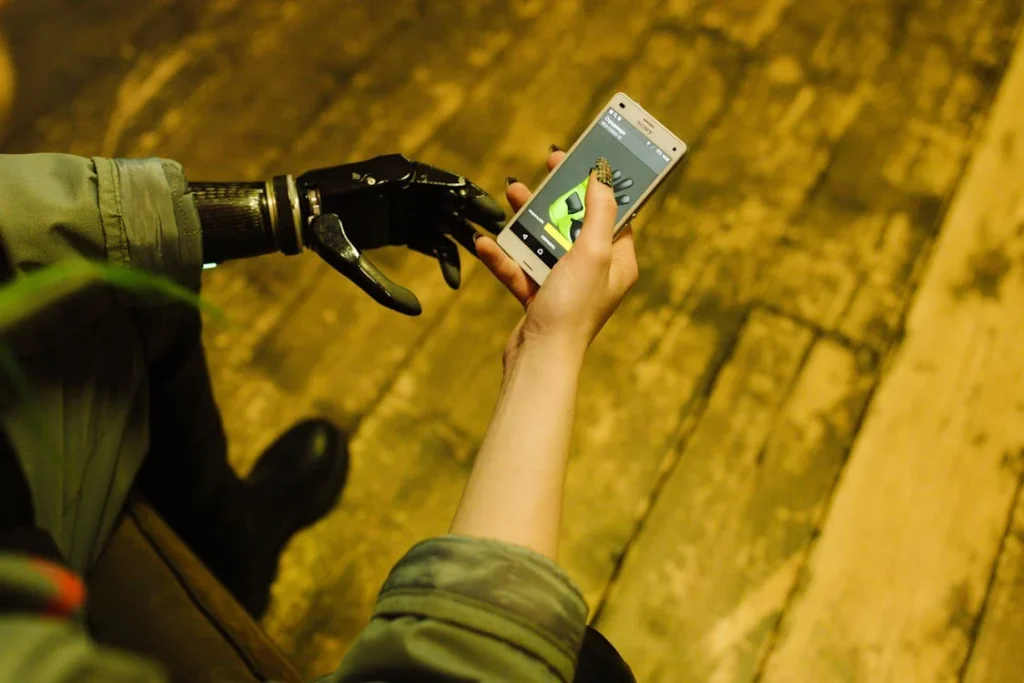A few decades ago, if you had lost a hand, your options were basic. Most upper limb prosthetics focused on one simple function—gripping. And even that, truthfully, was more mechanical than helpful. Metal hooks and rigid claws were the norm. They worked, yes—but only just. They looked nothing like a human hand, and they felt even less like one.
Fast forward to today, and the landscape looks completely different.
Modern prosthetics don’t just grip—they flex, rotate, adapt, and even respond to muscle signals. Some mimic the way we naturally hold a pen or pinch a key. Others use AI to predict what kind of grip you’ll need next. The world of upper limb prosthetics has quietly undergone a revolution. At the heart of this transformation lies one critical advancement: grip technology.

How It All Began: The Early Days of Upper Limb Prosthetics
The Mechanical Era: Utility Over Comfort
In the early stages of prosthetic development, the main goal was simple—restore some level of function. Comfort, realism, and adaptability were afterthoughts. During the 19th and early 20th centuries, most upper limb prosthetic devices were purely mechanical.
A person who had lost an arm might be fitted with a hook, a wooden hand, or a rudimentary lever system. These devices often had one or two fixed positions. There was no fine motor control, no feedback, and certainly no electronics involved.
The earliest grip mechanisms were rigid and limited. Users had to move their shoulders or elbows in exaggerated ways to open or close a hook. Gripping an object required precise positioning and quite a bit of strength.
These devices weren’t intuitive; they had to be learned like a new language. Imagine trying to tie your shoelaces with a clamp. That was the reality for many.
Most prosthetic users at the time were war veterans or accident survivors. Their priorities were shaped by necessity: hold a broom, carry a bag, open a door. These early solutions did manage to provide basic independence.
But that independence came with a steep learning curve and very limited dexterity. Functionality mattered more than appearance, and life-like movement was a distant dream.
The Birth of Body-Powered Control
In the mid-20th century, body-powered prosthetics began to gain traction. These devices used a harness and cable system connected to the body—typically anchored at the shoulder. When the user shrugged or extended their arm, the cable would move, opening or closing the prosthetic grip.
This was a step forward. It allowed for more deliberate control, and it reduced some of the unnatural motion required by earlier systems. Still, the grips were fairly binary—open or shut, with no nuance.
You couldn’t gently hold a grape or press a button softly. The grip was strong and abrupt, not subtle or adaptable.
But despite their limitations, body-powered prosthetics were dependable and low-maintenance. In fact, many users today still prefer them for rugged environments where durability is essential.
They work without batteries, require less servicing, and are relatively affordable. However, the lack of precision and the physical strain of using shoulder muscles constantly became significant drawbacks as expectations evolved.
The Push for Realism: Cosmetic vs. Functional
As prosthetic technology began to move forward, a split emerged between cosmetic and functional prosthetics. Cosmetic prosthetics looked like real hands but offered little to no function.
They were made of silicone or rubber and designed to match the skin tone, shape, and appearance of the user’s other hand. These were often chosen for social or psychological comfort but didn’t offer much in terms of grip.
Functional prosthetics, on the other hand, focused entirely on movement and utility. They might look robotic or industrial, but they could grasp a hammer or pick up a cup. Yet, they still lacked the finesse needed for daily life tasks that involved varied grips, such as using utensils or typing on a keyboard.
Users had to make a tough choice: appearance or performance. It wasn’t until later that technologies would emerge to combine both. That evolution was triggered by one breakthrough—electrical power.
The Introduction of Myoelectric Technology
The real game changer in grip technology came with the development of myoelectric prosthetics in the late 20th century. These devices use small electrical signals generated by muscles in the residual limb.
Sensors placed inside the prosthetic socket detect these signals and translate them into commands for the artificial hand.
Instead of pulling a cable with your shoulder, you now simply contract a muscle—just like you would with your natural arm. For the first time, prosthetic hands could respond in real time to voluntary muscle control.
Grips became smoother and more responsive. Users could practice and refine how tightly they wanted to hold something.
While early myoelectric systems had only basic grip patterns, like opening and closing, this was a major leap from the binary hook systems of the past.
It allowed for a more natural learning process and reduced the physical strain of earlier devices. Importantly, it opened the door to much finer control, which later innovations would capitalize on.
The Turning Point: User Expectations Begin to Shift
As myoelectric technology spread, users began to expect more. The limitations of single-grip hands became apparent. You could open and close your hand, but what if you wanted to hold a fork and a knife at the same time? What if you needed to rotate your wrist or hold a delicate object?
Prosthetic developers realized that grip wasn’t just about power. It was about variety and precision. People don’t just pick things up—they manipulate them, balance them, and switch grips constantly without thinking. Replicating that complexity became the next frontier.
This shift led to the concept of multi-grip technology. Instead of a single action, a prosthetic hand could now switch between different grip types, each suited for a different task.
A tripod grip for writing, a key grip for turning a knob, a power grip for lifting a bag. This concept fundamentally changed the design of upper limb prosthetics going forward.
It was no longer just about closing and opening. It became about adapting.
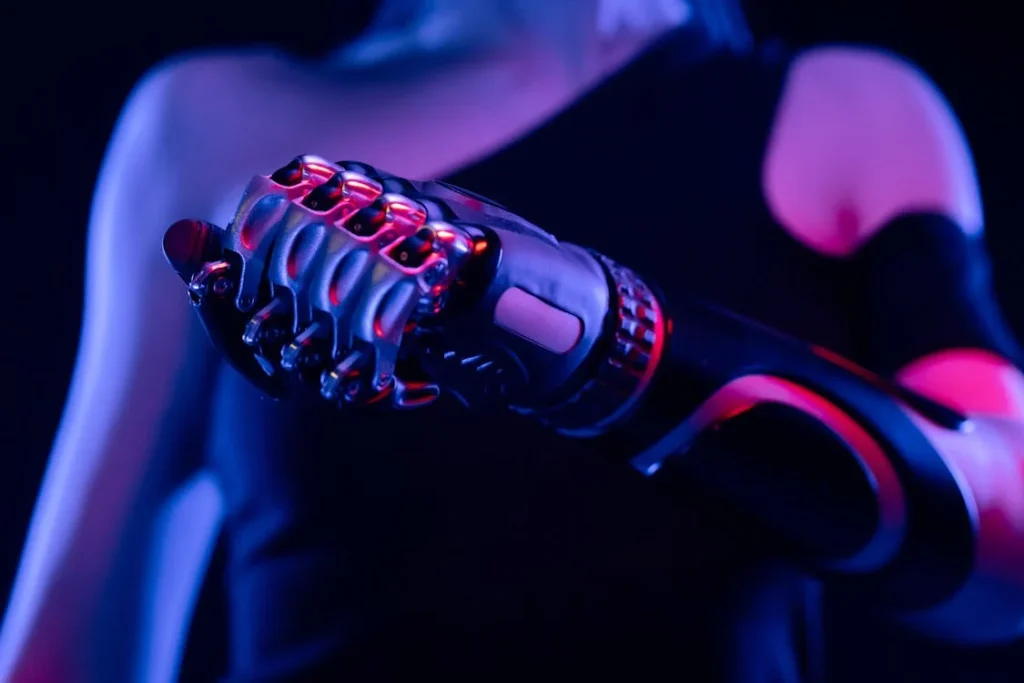
The Rise of Multi-Grip Bionic Hands
Understanding the Need for Multiple Grip Patterns
In our daily lives, we rarely think about how many ways we use our hands. Holding a phone, tying shoelaces, unscrewing a bottle cap, shaking someone’s hand—each of these tasks involves a different grip, angle, and muscle coordination.
This automatic, fluid movement is what truly defines human dexterity. For prosthetic users, mimicking this range of motion was the missing link for decades.
Early myoelectric hands could open and close using one predefined movement. That was better than a static hook, but far from enough. As users pushed for greater independence, prosthetic developers began to map out the core grip types humans use every day.
These include the power grip, pinch grip, key grip, tripod grip, and lateral grip, among others. The goal was simple yet ambitious: design a prosthetic hand that could easily switch between these modes on demand.
This marked the beginning of the multi-grip prosthetic era. Devices now needed not only mechanical parts that could replicate each grip, but also smart systems to manage them without overwhelming the user. This required an overhaul in both hardware and software.
Mechanical Advances: Going Beyond the Basic Claw
To support multiple grips, prosthetic hands needed finer control over individual fingers. The traditional one-motor system that simply opened and closed the entire hand had to evolve.
Engineers began creating prosthetics with multiple motors—often one per finger. This allowed each digit to move independently or in specific groupings to create a desired grip shape.
More motors also meant better force distribution. Holding a fragile object like a lightbulb required much less pressure than carrying a grocery bag.
With programmable torque limits and adaptive grip strength, these new hands could apply the right amount of force based on the task. Users could grasp, release, and adjust their hold mid-task—something unheard of in earlier designs.
Finger articulation also became more natural. Instead of the rigid, synchronized motion of all fingers moving together, newer hands introduced curved, jointed fingers that flexed in stages.
This mimicked the fluid, curling motion of a natural hand and allowed for more secure, stable contact with objects of various shapes and sizes.
In some designs, even the thumb became repositionable. It could be rotated to support a lateral grip (like holding a key) or brought inward for precision tasks. The mechanical complexity of these hands increased significantly, but so did their usefulness and realism.
Software and Smart Switching: Making Control Intuitive
Adding new grips was a leap forward, but that created a new challenge: how could users control so many functions with just a few muscle signals?
After all, the human body doesn’t naturally produce a different signal for each grip type. So developers introduced smart switching systems.
These systems use a combination of gesture-based commands, pre-set modes, and even mobile apps to switch between grip types. For example, a quick double flex of a muscle might cycle through available grips.
A long hold could activate a specific mode like power grip. And in some cases, users could program their own sequences for faster access.
Some systems even included pattern recognition, where the prosthetic learns to identify distinct muscle patterns over time and assigns them to specific grips.
This machine learning approach drastically improves ease of use. The more you wear the prosthetic, the smarter it gets at predicting your intent.
In certain devices, Bluetooth connectivity allows real-time customization through an app. Users can fine-tune grip strength, speed, finger positions, and even monitor usage stats. This turns the prosthetic into a dynamic tool that evolves with its user.
These innovations made prosthetics not just tools, but personal devices—responsive, intuitive, and adaptable. The result was higher user satisfaction, greater engagement in daily activities, and improved quality of life.
Emerging Features: Wrist Rotation and Proportional Control
To further support grip variety, many bionic hands began integrating wrist functions. Basic rotation and flexion allow users to position their hand naturally without moving their entire arm. This is crucial for things like turning a doorknob, pouring water, or typing on a keyboard.
Proportional control was another breakthrough. Instead of a single open-close speed, users could control how fast or slow the hand moved based on how strongly they flexed their muscle.
A soft muscle contraction might trigger a gentle, slow movement—ideal for delicate tasks. A stronger contraction could produce a fast, firm grip for carrying heavier objects. This level of nuance added a whole new dimension to grip technology.
Advanced sensors also began to play a key role. Force sensors in the fingertips let the prosthetic respond in real time to contact pressure, reducing the risk of crushing fragile items.
Some systems even started to incorporate haptic feedback, where vibrations or pulses let the user “feel” what they’re holding. Though still in development in many models, this feature promises to restore the sense of touch in meaningful ways.
How Multi-Grip Hands Transformed Daily Life
For users, these innovations weren’t just about gadgets—they were about reclaiming freedom. Tasks that once required help—like holding a child’s hand, using a fork and knife, or opening a water bottle—became manageable independently.
The ability to perform these actions without conscious effort significantly improved confidence and social participation.
Children using these hands adapted even faster. They could learn to use a multi-grip hand the same way they learned to walk or speak—through repetition and curiosity. This helped normalize prosthetic use at a young age and encouraged early skill-building.
Multi-grip technology also opened new doors in the workplace. People could now pursue jobs that required fine motor skills, like working in a lab, fixing electronics, or even cooking professionally.
Prosthetics were no longer just about appearance—they became functional, reliable partners in day-to-day life.
Of course, cost and accessibility still remain barriers. Advanced multi-grip hands are often expensive and not fully covered by insurance in many countries. But as awareness and innovation grow, more affordable versions are gradually entering the market.
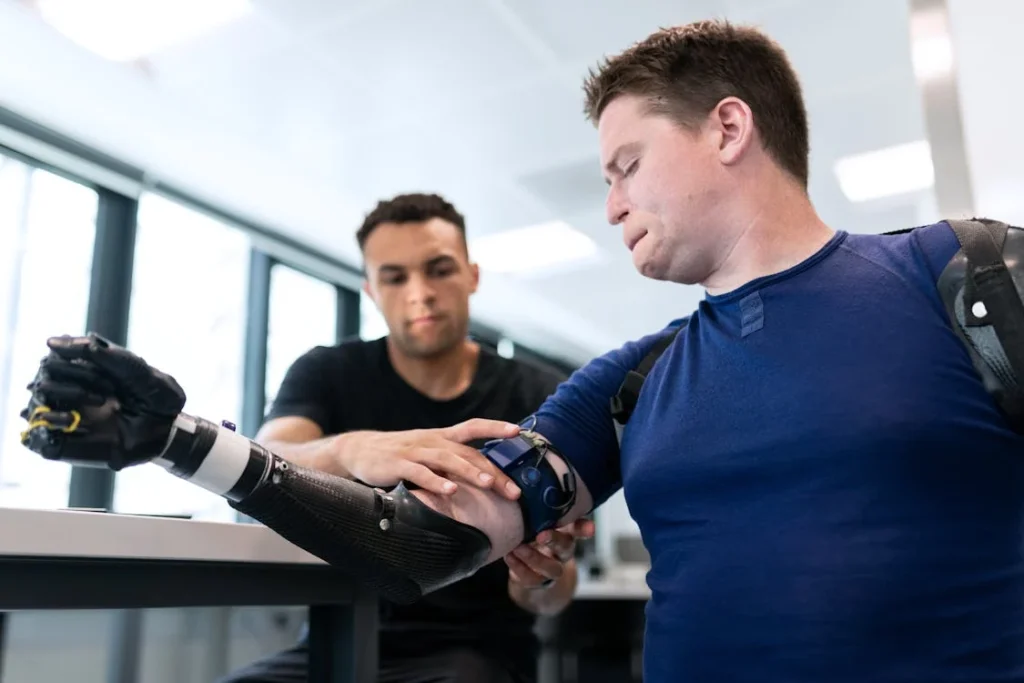
From Smart to Smarter: AI and Sensor Integration in Grip Technology
Why the Next Leap Required Intelligence, Not Just Mechanics
Once multi-grip prosthetic hands became a reality, it was clear that function alone wouldn’t be enough. People didn’t just want a hand that could switch grips—they wanted one that could understand when and how to switch without constant manual input.
And for that, grip technology needed to get smarter. Not in a metaphorical sense, but quite literally: through artificial intelligence, real-time data interpretation, and more sensitive sensor networks.
Adding more motors and grip patterns gave users options. But too many options can actually become overwhelming, especially when they need to be accessed through limited muscle signals.
That’s where artificial intelligence, embedded sensors, and machine learning came into play. These technologies helped remove friction from the user experience and allowed grip selection and strength to feel less like a command—and more like an extension of intention.
Today’s most advanced prosthetic hands aren’t just reactive. They’re predictive. They learn how you move, what you pick up, and how you tend to grip different objects. Over time, they adjust their responses to fit your personal habits.
AI at Work: Predicting Grips from Context
Imagine you’re about to pick up a glass. With older prosthetic systems, you’d have to manually select a grip, adjust finger positioning, and manage the force.
With AI-assisted systems, your hand may already “know” this is a cylindrical object and shift into a power grip mode before you consciously think about it.
This is made possible through real-time pattern recognition. AI systems are trained on a wide range of muscle signal combinations. The more you use your prosthetic, the better it becomes at interpreting your muscle cues and mapping them to specific actions.
That’s because the system is constantly collecting data on how your body behaves in various scenarios.
The software tracks factors like muscle intensity, signal frequency, switching patterns, and even how often you use specific grips during the day. With enough use, it can begin to predict your next move based on context.
This learning process is dynamic and user-specific—meaning no two prosthetic users will have the exact same algorithm behavior.
This evolution from reactive control to predictive intelligence is not just a technical upgrade—it completely changes the relationship between user and device. The prosthetic becomes a partner, anticipating needs rather than waiting for commands.
Sensor Networks: Making Hands Feel More Human
The addition of advanced sensors has also brought grip technology closer to mimicking natural hand behavior. In human hands, thousands of nerve endings deliver information about pressure, temperature, texture, and movement. While prosthetics can’t replicate all that yet, they’re getting closer.
Modern bionic hands now come with fingertip sensors that measure contact pressure. These allow the prosthetic to instantly adjust grip strength to avoid dropping or crushing an object.
Holding an egg, for instance, no longer requires trial and error. The system can sense how much resistance the object offers and apply just enough force to maintain a secure hold without damage.
Accelerometers and gyroscopes also help track the angle and speed of motion. This enables smoother, more fluid transitions between grip states and allows the hand to compensate for wrist or arm movement.
If you’re walking while holding a cup, the prosthetic can adapt its grip to maintain balance, reducing spills.
Some devices also incorporate environmental sensors. These can detect things like the shape of an object being approached or its proximity to the hand.
Using this information, the prosthetic can preemptively prepare the right grip type, allowing for faster, more efficient interaction with the environment.
Haptic Feedback: Restoring the Sense of Touch
One of the most exciting developments in grip technology is haptic feedback—the ability to simulate touch sensations. While still in early stages, some prosthetics now use small vibratory motors or electrocutaneous stimulation to relay tactile information back to the user’s skin.
Imagine holding a tomato and feeling a subtle vibration in your residual limb that increases with pressure. This gives you real-time feedback that helps prevent over-squeezing.
Over time, users learn to associate specific sensations with certain actions or outcomes, essentially “feeling” their grip even without biological nerves.
Some systems go further by integrating thermal sensors or advanced pressure mapping. The goal is to replicate not just the presence of touch, but also the quality of touch—firmness, slipperiness, texture, and even temperature.
While full sensory restoration is still a long way off, these early steps make prosthetic interaction more natural and precise.
Smart Ecosystems: The Role of Companion Apps and Cloud Sync
Today’s grip technology isn’t confined to the prosthetic itself. Many bionic hands are now part of a wider digital ecosystem.
Mobile apps allow users to control their device in real time—adjusting grip strength, saving custom grip profiles, and tracking performance metrics like daily usage or signal strength consistency.
Some apps even offer tutorials, calibration tools, and AI training programs. These let users train their hand’s algorithm in a controlled environment, improving performance during actual tasks.
Cloud syncing ensures that if the prosthetic is upgraded or repaired, the learning and preferences are preserved.
This integration has turned prosthetics from static tools into adaptive platforms—devices that improve over time, evolve with the user, and become increasingly personal.
In a world moving toward hyper-personalized technology, grip innovation in upper limb prosthetics has kept pace—quietly but powerfully. We’re no longer just building hands. We’re building intelligent interfaces between the body and the world.
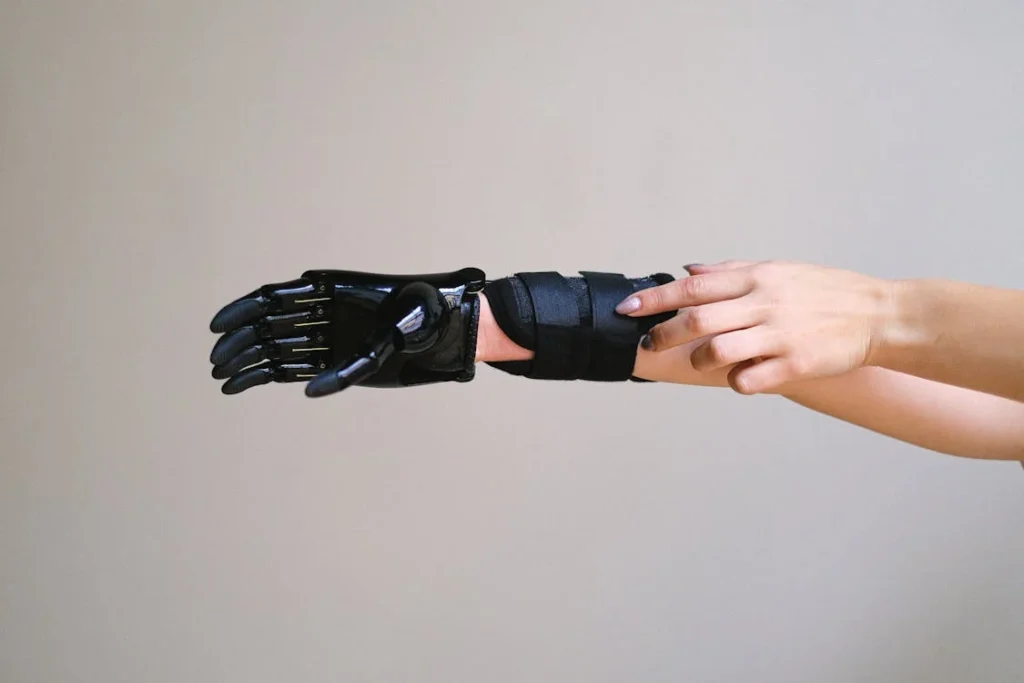
Challenges and Limitations in Modern Grip Technology
Not Every Innovation Reaches Every User
Despite how far grip technology has come, the path is not without roadblocks. The reality is, even the most advanced prosthetic hands—those with AI, multi-grip capability, and real-time sensors—are still out of reach for many.
The biggest barrier is cost. High-end myoelectric or bionic prosthetics with smart grip systems can run into lakhs of rupees, making them unaffordable for the majority of amputees in India and across much of the world.
Insurance often doesn’t fully cover these advanced devices, especially when the prosthetic is seen as “non-essential” or cosmetic. This creates an enormous gap between what technology can offer and what people actually have access to.
So while one person may have a multi-grip, AI-enabled prosthetic with mobile app control, another may still be using a basic mechanical hook, simply because that’s what their budget allows.
This disparity impacts more than convenience—it affects confidence, independence, and long-term recovery. For prosthetic technology to truly change lives, it must be made more accessible, not just more advanced.
Training Fatigue and User Abandonment
Another often-overlooked issue in grip tech is training fatigue. Multi-grip and AI-assisted hands sound powerful on paper, but using them effectively takes time and commitment. It’s not as simple as slipping the device on and getting back to life.
Users have to learn how to control their prosthetic through muscle contractions. They must train the AI to understand their signals. They have to remember command sequences, practice timing, and get used to subtle forms of feedback.
This process can feel overwhelming—especially for first-time users or those who already face physical or emotional exhaustion. The steep learning curve leads to frustration.
In some cases, people abandon their prosthetic altogether, not because the technology is bad, but because using it never became second nature.
Prosthetic developers are now trying to address this with better onboarding support, virtual training environments, and simpler switching systems. But the truth remains: a powerful device is only valuable if it’s easy to use and comfortable to wear.
The Problem of Signal Interference
Myoelectric control relies heavily on clean muscle signals. But the human body isn’t a perfect system. Sweat, skin movement, socket slippage, or even changes in muscle tone due to fatigue can disrupt the signals sent to the prosthetic.
This means a grip that worked perfectly in the morning might become unreliable by evening.
Electrodes inside the socket can lose contact. Moisture can interfere with conductivity. Even small shifts in how the prosthetic is worn can result in wrong or missed commands.
These inconsistencies can severely affect user confidence. Imagine needing to urgently hold something—like a railing or a child’s hand—and your prosthetic fails to respond correctly. That anxiety stays with the user.
To combat this, engineers are experimenting with more robust electrode systems, flexible sensor arrays, and self-calibrating algorithms. Some hands now use multiple sensors across the socket, allowing the system to “vote” on which signal to trust most.
Others integrate accelerometers and gyroscopes to validate commands based on motion context. Still, signal reliability remains a core challenge.
Battery Life and Maintenance Realities
As grip technology becomes smarter, it also becomes more power-hungry. Motors, processors, Bluetooth modules, sensors, and feedback systems all require energy.
This means that high-tech prosthetics need to be charged regularly—sometimes daily. For people living in areas with unreliable electricity or frequent travel demands, this becomes a major limitation.
And it’s not just about power. Advanced prosthetics require more upkeep. Motors may need servicing, sensors need recalibration, and software updates must be installed. If the device breaks down, replacement parts can be expensive or delayed, especially in rural areas.
This brings up another important issue: durability. Many advanced hands are designed in and for environments with controlled indoor conditions. In India, where heat, dust, humidity, and physical labor are daily realities, these hands need to be tougher.
Sweat-resistant designs, shock-proof components, and rugged external materials are not just add-ons—they are essential for long-term use.
Manufacturers are beginning to develop more weather-resistant models, but durability continues to lag behind function in many cases.
The focus on making prosthetics more like consumer electronics—sleek and feature-packed—sometimes compromises their ruggedness in the real world.
The Psychological Disconnect
Perhaps the most difficult challenge isn’t technical—it’s emotional. No matter how advanced a prosthetic hand becomes, it is still, at the end of the day, a replacement. And many users struggle to fully accept or connect with a device that doesn’t “feel” like their own.
The disconnect can be especially strong when using high-tech grips that are controlled through gestures or muscle patterns that don’t directly match the original, natural movement.
Even with training and adaptability, there’s often a cognitive delay—your brain knows you have to think differently just to pick up a cup.
Prosthetics with sensory feedback aim to close this gap. Feeling something, even as a mild vibration, can create a greater sense of ownership and control.
But full sensory integration is still years away from mainstream availability. In the meantime, emotional support, peer mentoring, and long-term rehabilitation remain critical parts of helping users adapt.
The human element is as important as the hardware. Without mental and emotional integration, even the most technologically brilliant grip system may never feel like a real hand.
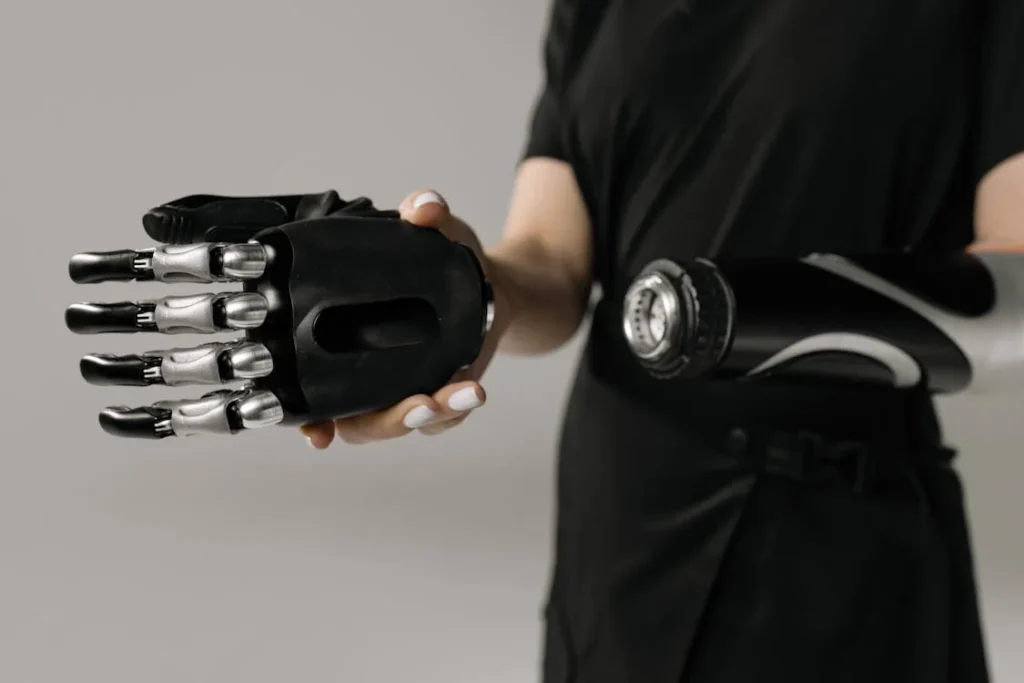
The Future of Grip Technology: What’s Next for Prosthetic Hands?
Closing the Gap Between Machine and Muscle
The journey so far in grip technology has been astounding, but the road ahead may be even more transformative. One of the biggest focuses in research today is reducing the disconnect between what the brain wants to do and how quickly—and precisely—the prosthetic can respond.
Right now, most high-end upper limb prosthetics depend on myoelectric signals from surface electrodes, but these signals are often faint, noisy, and delayed.
The future lies in getting closer to the source—the nervous system itself. Scientists are actively working on systems that can tap into nerve signals and decode them with greater clarity.
Unlike myoelectric control, which uses surface-level muscle activity, these next-gen systems aim to use neural interfaces—technologies that read signals directly from the nerves or even the brain.
When this becomes reliable and safe, prosthetic hands won’t just guess which grip you want based on muscle tension. They’ll know, because the command will come from the exact same place it used to: your central nervous system.
This could be the closest we get to restoring true, natural hand function.
In fact, some early clinical trials of implanted nerve interfaces have already shown people moving individual prosthetic fingers with surprising accuracy and speed.
While still experimental and expensive, these breakthroughs suggest that the divide between human thought and mechanical action is shrinking.
Sensory Feedback That Actually Feels Real
Another critical leap on the horizon is the quality and realism of sensory feedback. Basic haptic feedback has already made its way into a few commercial prosthetics, usually in the form of vibrations. But what if a user could actually feel pressure, texture, or temperature?
This is where electrotactile and mechanotactile technologies come into play. Instead of just buzzing, future prosthetics may press or stimulate the skin in very specific patterns, mimicking how a real fingertip feels when touching different surfaces.
These patterns can simulate hardness, roughness, or slipperiness. Some researchers are also exploring ways to connect sensors directly to nerve endings, offering the possibility of recreating genuine tactile perception.
The implications are enormous. With true sensory feedback, the brain begins to re-map the prosthetic as part of the body—a process known as embodiment. This could not only improve how people use their prosthetic hands but also profoundly impact how they feel about them.
You wouldn’t just be wearing a tool. You’d be feeling through a hand again.
Adaptive AI That Thinks Ahead
Artificial intelligence already plays a big role in modern prosthetics by learning muscle patterns and predicting user intent.
But future systems will likely go much further. Instead of responding to muscle inputs alone, AI could begin interpreting context from other inputs: eye tracking, voice commands, even brain signals.
Imagine looking at an object and having your prosthetic immediately know how to prepare the grip. Or issuing a verbal cue like “soft hold” to activate a gentle pinch. These multi-modal systems would allow for far more natural and fluid interaction.
Even more exciting is the idea of anticipatory movement. Based on repeated behavior, time of day, and even emotional cues (like stress levels), the AI could anticipate what the user is likely to need next.
If you always pick up your keys around 9:00 AM, your prosthetic might prepare a lateral grip automatically. If you’re reaching toward your phone, it could begin positioning into a tripod pinch before your fingers even get there.
These capabilities move grip technology from reactive to proactive—a profound shift in how artificial limbs are used.
Lightweight, Soft Robotics for Everyday Use
Right now, many prosthetic hands are still made of rigid components—metal joints, hard casings, and firm motors. They’re effective, but not always comfortable, especially when worn for long hours.
The next wave of innovation is focusing on soft robotics—prosthetic hands made of flexible materials that move like biological tissue.
Using fluidic actuators, bendable joints, and stretchable electronics, these hands can squeeze into tighter spaces, move more naturally, and offer better comfort over long wear periods. They’re also safer to use around children and pets, and less likely to cause injury if dropped.
Flexible grip technology doesn’t just offer better ergonomics—it may also reduce socket irritation, improve signal capture, and increase overall user satisfaction. Lighter hands also consume less power, extending battery life and simplifying the mechanical design.
For people in hot, humid climates like much of India, the combination of breathable materials, lighter weight, and better sweat management could solve several everyday usability issues.
Making Technology Affordable and Scalable
As much as innovation matters, access matters more. A hand with 50 grip types and built-in AI is only meaningful if people can afford and maintain it. The future must include scalable solutions—lower-cost prosthetics with essential grip functionality that still offer dignity, independence, and quality.
Open-source prosthetic platforms are already making waves. These community-led projects allow engineers and users to share designs, create modular components, and even 3D print custom parts. Combined with mobile app controls and low-cost sensors, such models are bringing smart grip technology into new hands—literally.
Nonprofits, government schemes, and startup incubators are also playing a role. In India, the growth of Make-in-India initiatives and indigenous tech startups is helping drive down costs without compromising innovation.
The future lies not just in what we build—but in who we build it for.
Toward a Truly Human Experience
Ultimately, the evolution of grip technology is not about the hand—it’s about the person behind it. Every development, from AI to feedback sensors to soft materials, aims to help users do one thing: live fully. Whether it’s a child tying her shoelaces, a mother cooking for her family, or a young professional typing emails, these moments are what grip technology is working to restore.
We’ve come a long way from metal hooks and cable harnesses. Today’s prosthetic hands can adapt, learn, and even sense. But the real magic happens when the user stops thinking about the mechanics and simply lives.
And that’s the future we’re building—one grip at a time.
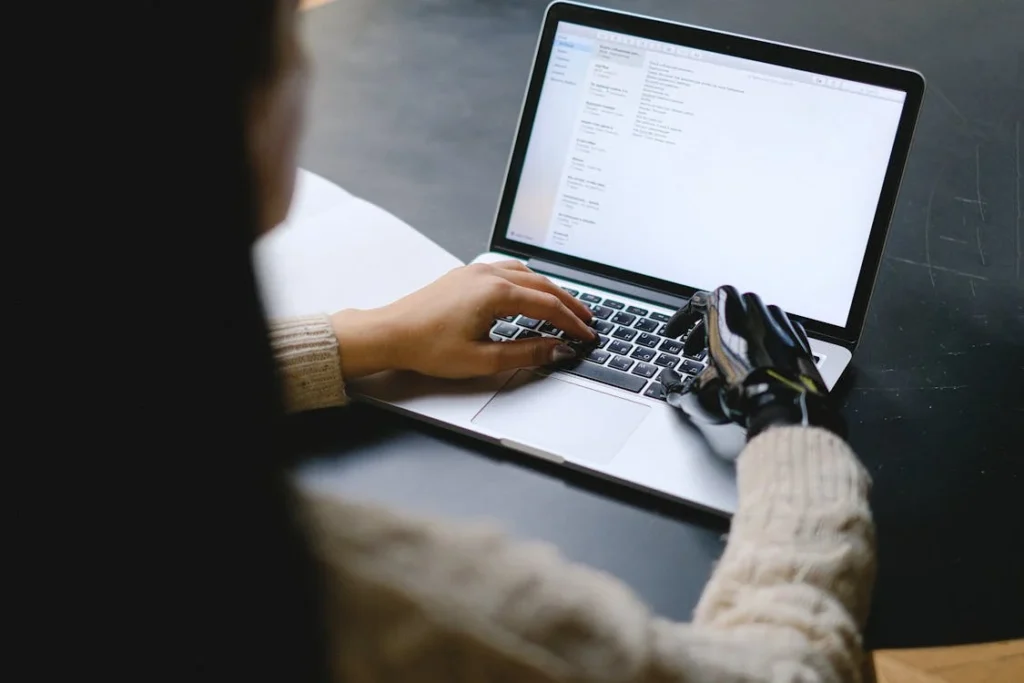
Conclusion
Grip technology in upper limb prosthetics has transformed from crude tools into smart, responsive extensions of the human body. From basic hooks to intelligent, multi-grip bionic hands, each leap forward has brought us closer to restoring not just movement—but freedom, dignity, and independence.
As AI, sensory feedback, and neural control continue to evolve, the goal isn’t just better hands—it’s better lives. At Robobionics, we believe every person deserves a prosthetic that adapts to them—not the other way around. The future is in your hands. And now, more than ever, those hands are ready to grasp it.



